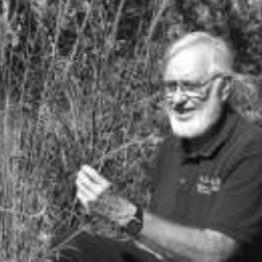I first started reading the writings of early Texans in order to get a better understanding of what Texas looked like in the 1800s and early 1900s. The more I read, the more fascinated I am at the lives of early explorers and settlers—how they lived, the hardships they endured, and in some cases, how they died.
The notion of the “Good Old Days,” at least to my 20th and 21st century eyes, certainly does not apply to life in early Texas. Obtaining food and shelter and just attending to the duties of everyday life was more like what we would now call a full-time job. Travel was obviously on a very different time scale, was infinitely more arduous and sometimes impossible for months at a time. Interactions with Native Americans ran the gambit from settlers being slaughtered to Native Americans also being slaughtered, to distrust and hatred, to coexistence.
We have to remember that in the mid to late 1800s, most of Europe and the eastern part of the U.S. had cities and societies advanced to the point where there were roads, bridges, railroads, public buildings, churches, universities, commerce and early manufacturing facilities. Most of Texas had none of that. So people were on their own to provide all the necessities of life. Despite the conditions that existed in Texas then, and the fact that just getting by took most of their time, early Texans were just as intelligent, resourceful, dedicated, brave, and adventuresome as any of us, maybe more so.
To learn more about the daily lives of early Texans, I recommend any of the following books:
“A Journey through Texas” by Frederick Law Olmsted. If the author’s name sounds familiar, it should; he went on to design Central Park in New York City and to be considered America’s foremost landscape architect. He traveled thorough Texas on horseback in 1856 and 1857, from the Sabine to Nacogdoches to San Antonio, to the Mexican border and back to Houston and finally New Orleans.
“Early Times in Texas” by John C. Duval. He tells a tale of his experience as a young man from Virginia who comes to Texas to help her fight for independence in 1835. By great luck he was one of the very few who survived the massacre at Goliad only to be left in the woods without a gun or a horse, surrounded by Mexican soldiers. Traveling on foot, hiding from both Mexican soldiers and Native Americans, scrounging for food wherever he could, he eventually was discovered by a couple of Texan soldiers near Houston just after the Battle of San Jacinto.
For a fascinating description of travels around the Hill Country, especially in the areas of New Braunfels, San Antonio, and Fredericksburg from 1845 to 1847, read “Roemer’s Texas” (alternate title, “Texas with particular Reference to German Immigration and the Appearance of the Country”) by Ferdinand Roemer, translated from the German by Oswald Mueller.
“Texas Roots. Agriculture and Rural Life Before the Civil War” by C. Allen Jones. Detailed accounts of life, mainly in South and East Texas, from the earliest Spanish missions to Mexican rule, to Texas Independence, to Statehood.
“Beneath the Window” by Patricia Wilson Clothier. The author tells the story of growing up in what would become Big Bend National Park in the 1930s and 1940s, before the area became a park. The “window” referred to in the title is the Pouroff from the Chisos Basin on the West side of the Chisos Mountains.
A Life Among the Texas Flora. Ferdinand Lindheimer’s “Letters to George Engelmann” by Minetta Altgelt Goyne. Lindheimer, a self-taught botanist who became referred to as the Father of Texas Botany collected samples of Texas plants in the 1840s, pressed them and sent them to Engelmann who was the head of the Missouri Botanical Garden. His collection was initially in the areas of Houston and Galveston, but he later moved to New Braunfels where he collected plants from central Texas and where his home still stands as a museum.
“Interwoven. A Pioneer Chronicle” by Sallie Reynolds Matthews. This is a detailed journal of the life of the author who was born in 1861 and lived on various ranches in Throckmorton, Haskell and Shackelford counties. The author describes in detail conflicts with the Native Americans, massive buffalo herds, and details about the day to day existence on the edge of what was then considered “civilization.”
The more I read about the early Texan’s lives and what they knew about their surroundings, the less knowledgeable I feel I am.
I am available every Friday at Riverside Nature Center from 10 a.m. to 12 p.m. to talk one on one with anyone with questions or who just wants to talk about any issues related to nature.
Until next time…
Happy New Year.
Jim Stanley is a Texas Master Naturalist and the author of the books “Hill Country Ecology,” “Hill Country Landowner’s Guide” and “A Beginner’s Handbook for Rural Texas Landowners.” He can be reached at <jstmn@ktc.com>. Previous columns can be seen at <www.hillcountrynaturalist.org>.

